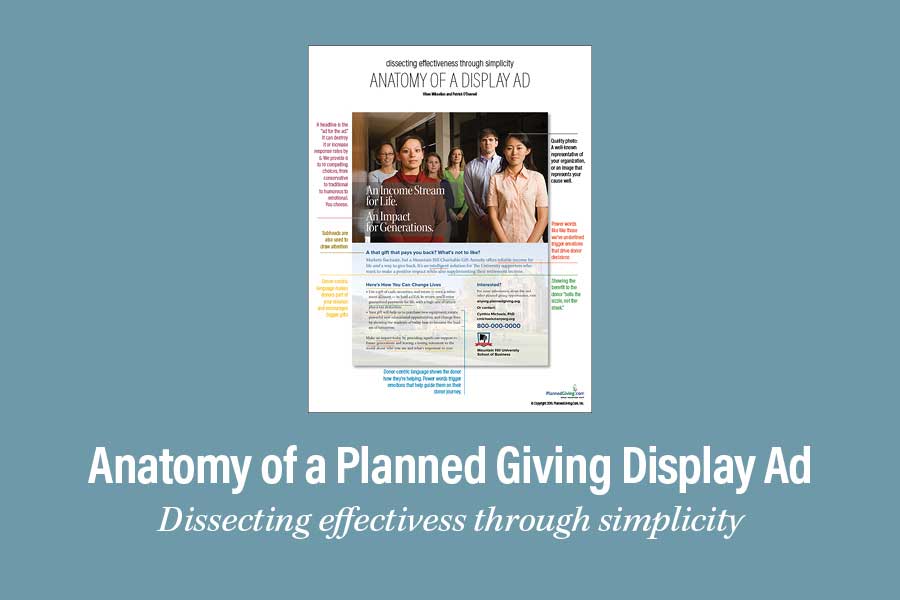Updated August 19, 2025
Every fundraiser dreams of securing more and larger gifts. The secret? Strategic planned giving ads that communicate your mission clearly and inspire donors to take action. When done right, these ads become powerful tools that work tirelessly in your fundraising arsenal.
Understanding the Power of Planned Giving Advertising
Planned giving marketing isn’t about complex tax strategies or legal jargon—it’s about connecting with donors on an emotional level. Your ads should focus on your mission, your impact, and how your donors can create lasting change. The most successful campaigns speak directly to donor aspirations while showcasing the transformative power of planned gifts.
The Essential Elements of High-Converting Planned Giving Ads
1. Craft Headlines That Stop Readers in Their Tracks
Your headline is the “ad for the ad”—it determines whether donors keep reading or move on. A compelling headline can increase response rates by up to 500%. Whether you choose conservative, traditional, humorous, or emotional approaches, ensure your headline speaks to donor motivations rather than technical details.
2. Select Images That Tell Your Story
Choose photographs that instantly communicate your mission’s impact. Children and pets consistently generate strong emotional responses, while respected board members or beneficiaries add credibility. Avoid generic stock photos—authentic images that showcase real people and real impact perform significantly better.
3. Write Donor-Centric Copy That Inspires Action
Shift your focus from what you need to what donors can achieve. Instead of “Help us reach our goal,” try “Your legacy gift ensures students receive scholarships for generations.” This subtle shift makes donors the heroes of your story, encouraging more generous giving.
4. Use Strategic Subheadings
Well-crafted subheadings guide readers through your message, making complex information digestible. They create visual breaks that keep readers engaged while highlighting key benefits and calls-to-action.
5. Incorporate Power Words That Drive Decisions
Certain words trigger emotional responses that influence donor behavior. Words like “legacy,” “forever,” “transform,” and “ensure” create powerful mental images that inspire action. Weave these throughout your copy to maximize impact.
Creating Ads That “Sell the Sizzle”
The most effective planned giving ads help donors envision their impact. Rather than listing gift options, paint a picture of the future their generosity will create. Help them “smell” the success—describe thriving programs, grateful beneficiaries, and lasting change.
Bringing It All Together
Great planned giving ads combine compelling headlines, authentic imagery, donor-focused messaging, strategic formatting, and emotional triggers. This proven formula builds trust, establishes credibility, and inspires action. Even top-tier institutions often miss these fundamentals, focusing on technical details rather than donor dreams.
Remember: your planned giving ads should make giving feel natural, meaningful, and exciting. When donors see themselves as partners in your mission rather than sources of funding, transformational gifts follow.
[Click here to download an infographic to help you create your next planned giving ad.]


